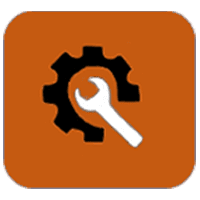Tools and Trainings
Access dataset and additional information.
This dataset provides an estimate of 2015 cheatgrass percent cover in the northern Great Basin at 250 meter spatial resolution. The information is designed to provide a near-real-time estimate of cheatgrass in the northern Great Basin for 2015 to optimize land management efforts to control cheatgrass, preserve critical greater sage-grouse habitat, and inform fire control and prevention. Timely maps of dynamic cheatgrass percent cover are needed in early summer for these purposes. Research shows that cheatgrass percent cover is spatially and temporally highly variable in arid and semiarid environments because cheatgrass germination and growth is highly sensitive to annual weather, especially precipitation totals and timing. Precipitation totals and timing are also spatially and temporally highly variable in these environments; therefore, this dataset is only representative of cheatgrass percent cover during 2015 and does not represent any other time period.
Access dataset and additional information.
This dataset provides an estimate of 2016 cheatgrass percent cover in the northern Great Basin at 250 meter spatial resolution. The information is designed to provide a near-real-time estimate of cheatgrass in the northern Great Basin for 2016 to optimize land management efforts to control cheatgrass, preserve critical greater sage-grouse habitat, and inform fire control and prevention. Timely maps of dynamic cheatgrass percent cover are needed in early summer for these purposes. Research shows that cheatgrass percent cover is spatially and temporally highly variable in arid and semiarid environments because cheatgrass germination and growth is highly sensitive to annual weather, especially precipitation totals and timing. Precipitation totals and timing are also spatially and temporally highly variable in these environments; therefore, this dataset is only representative of cheatgrass percent cover during 2016 and does not represent any other time period.
Access tools and additional information.
This dataset contains a time series (2000-2013) of cheatgrass percent cover maps covering the western and central areas of the northern Great Basin. The time series of cheatgrass percent cover maps was developed for two primary reasons: To better understand cheatgrass percent cover dynamics in the northern Great Basin and to develop a dataset that can be used as proxy for annual actual cheatgrass production thereby serving as the dependent variable in the cheatgrass dieoff model.
Access BehavePlus v6 Beta.
Behave Plus is a Windows-based computer program that can be used for any fire management application that involves modeling fire behavior and fire effects. The system is composed of a collection of mathematical models that describe fire behavior, fire effects, and the fire environment. The program simulates rate of fire spread, spotting distance, scorch height, tree mortality, fuel moisture, wind adjustment factor, and many other fire behaviors and effects; so it is commonly used to predict fire behavior in several situations.
Access community planning tools.
The Community Planning Assistance for Wildfire (CPAW) program provides communities with expertise in land use planning, forestry, risk assessment, and research to identify and reduce local wildfire risks and costs. Learn even more background and access other tools at Headwaters Economics.
View report.
This report discusses development of the Rangeland Vegetation Simulator (RVS) and new models for estimating understory conditions in forested landscapes. The RVS is calibrated on 112 unique sites and enables simulation of ecological dynamics, production and fuels in either a spatially explicit manner or as a processor of inventory data much like the FVS. Validation of the RVS, in this inaugural development, suggests significant promise for its use to describe vegetation and fuel data when the structure and composition are given, but its ability to describe succession is limited and in some cases unrealistic.
The premier outputs of the vegetation simulator are:
1) Standing biomass, carbon, and annual production of herbs and shrubs (including standing dead herbaceous material).
2) Vegetation structure, composition, and seral stage
3) Fuelbed properties (1, 10, 100, 1000 hr fuel) and fire behavior fuel models
4) Response of these attributes to herbivory and fire
Access website.
Explore the Great Basin LCC, its projects, events, story maps, and news.
Access data review.
The purpose of the Data Product Review website is to provide a place where people can work through a review process of various LANDFIRE data products and a method for submitting feedback and suggestions on a number of LANDFIRE data products in a guidebook structure. The site is based on a content management platform with structured content for a dynamic web experience. The feedback and suggestions will be reviewed both within and external to LANDFIRE and potentially improve future mapping updates and remaps.
Access tool.
The Climate-Smart Restoration Tool is a GIS mapping program designed to help natural resource managers match seedlots with planting sites based on climatic information.
Access webpage.
This Missoula Fire Lab webpage provides links to and descriptions of the many fire modeling applications they have developed.



